In addition to the incomplete wall of steel bollards, the U.S.–Mexico border now has a digital wall—the CBP One app, which the U.S. government recently began using for asylum seekers in order to discourage irregular crossings. While the app has provided a legal pathway to the United States for some migrants, others have encountered problems such as error messages and system crashes, causing yet more anxiety for those seeking asylum.
Hundreds of migrants are currently waiting in shelters in Piedras Negras, Mexico. They are constantly on their cell phones—not to talk to their families, but to keep trying to secure an appointment with immigration authorities on the CBP app. For some, such as thirty-seven-year-old Cinthia Yolani Matute Cruz from Honduras, the app has become a source of distress. “This app messes with you,” she says. “I’m desperate about this. Emotionally, it makes you feel really bad.”
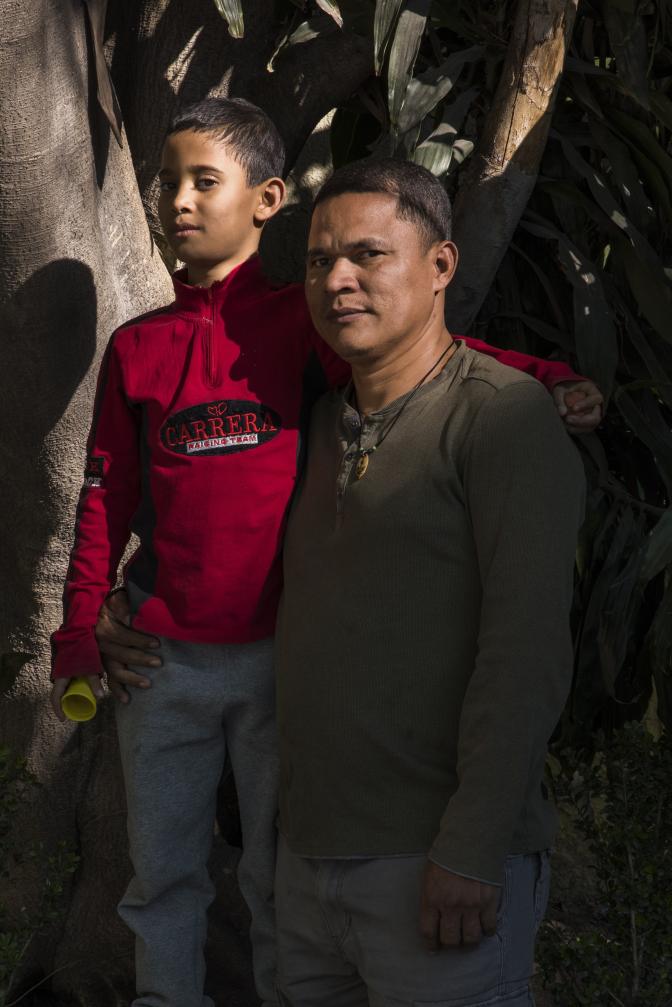
After the challenges of getting to the border, many migrants in the shelters are already desperate and exhausted. “I feel like my breath doesn’t reach inside, like I can’t breathe, as if my tongue is swallowing me. I have stress,” says Nimrod Castillo, a thirty-one-year-old migrant from Honduras. Castillo is traveling with his wife and two daughters, who became sick during their long journey. “Nightmares don’t let me sleep,” he says.
Located near the border, Piedras Negras has become an important crossing point for hundreds of migrants staying in shelters and waiting for their chance to enter the United States. Many of the migrants interviewed for this story claim to have been robbed and extorted by unidentified armed men and by Mexican security forces.
The shift in migration patterns is noticeable in Piedras Negras. While a decade ago most migrants on their way to the United States through Mexico were from Honduras, El Salvador, and Guatemala, U.S. Customs and Border Protection now encounters more people from Cuba, Venezuela, Nicaragua, and Haiti. Since 2014, more than 4,500 people have lost their lives at the U.S.–Mexico border. While this is not the only dangerous crossing point for migrants in the world (more than 27,000 people died in the Mediterranean Sea during the same period), the high number highlights the suffering experienced by migrants and the risks of this desert borderland.
—Text by Agus Morales; Photos by Núria López Torres
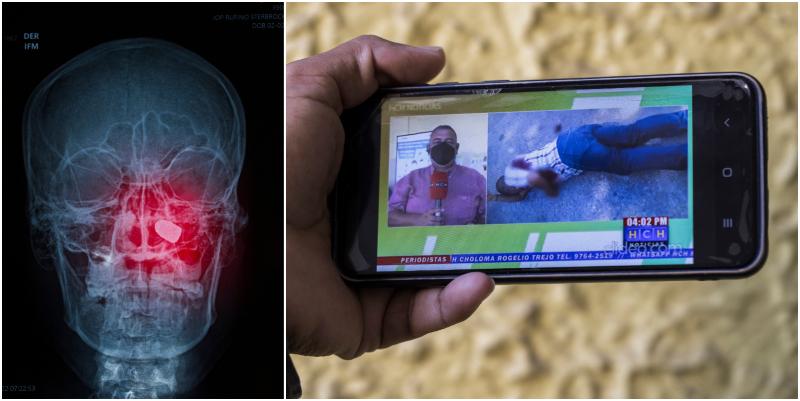
Above, left: An x-ray shows the bullet still lodged in Jop’s face.
Above, right: Jop shows a news report about the attempt on his life. The image on the right shows him lying unconscious in the street with several bullet wounds.
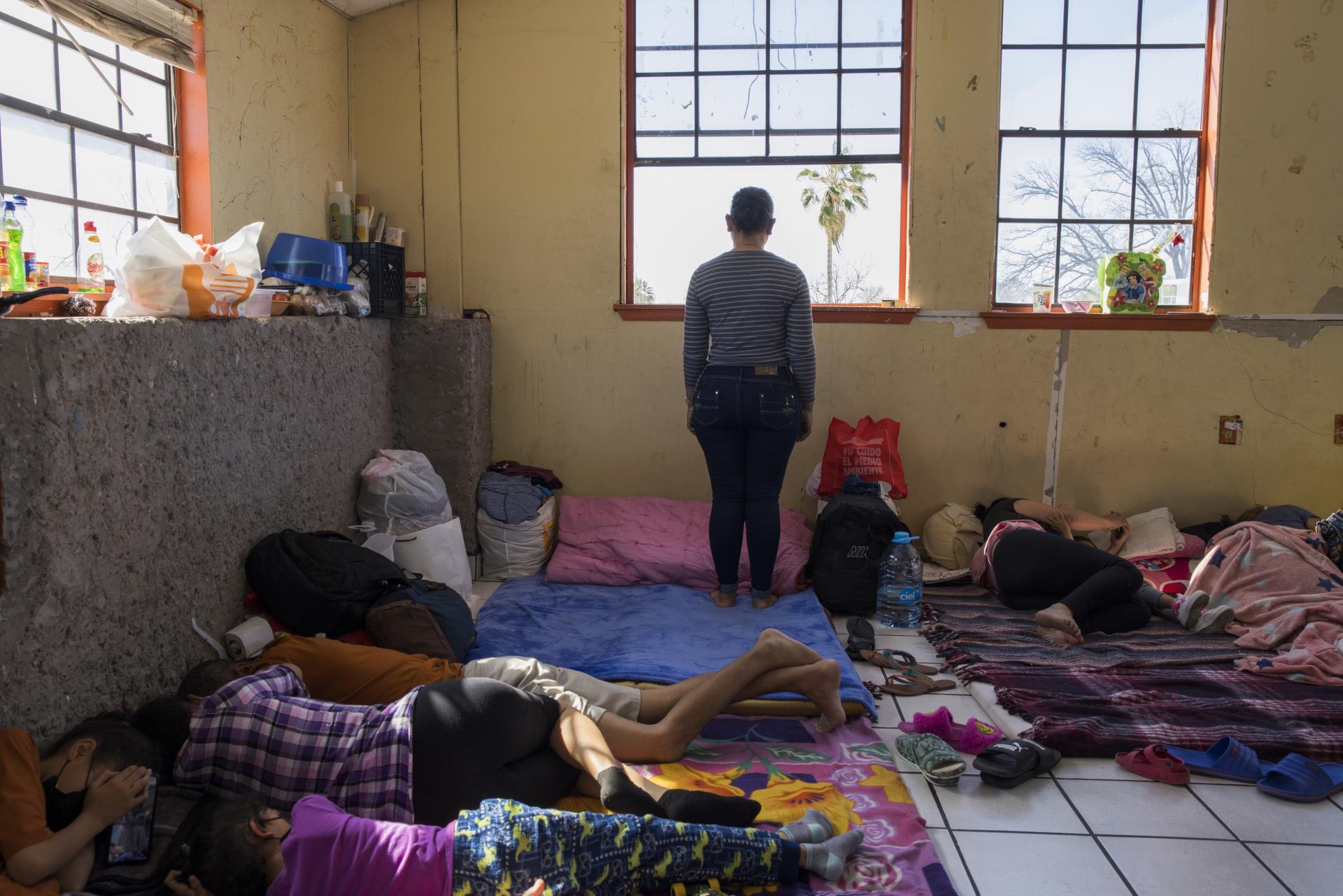
Above: Ana in the room she shares with other migrants at a Baptist church shelter in Piedras Negras. Her husband is working to earn some money to pay for shelter and food, but he risks being arrested by the city police, who often detain and sometimes beat migrants. Some migrants have disappeared in police custody.
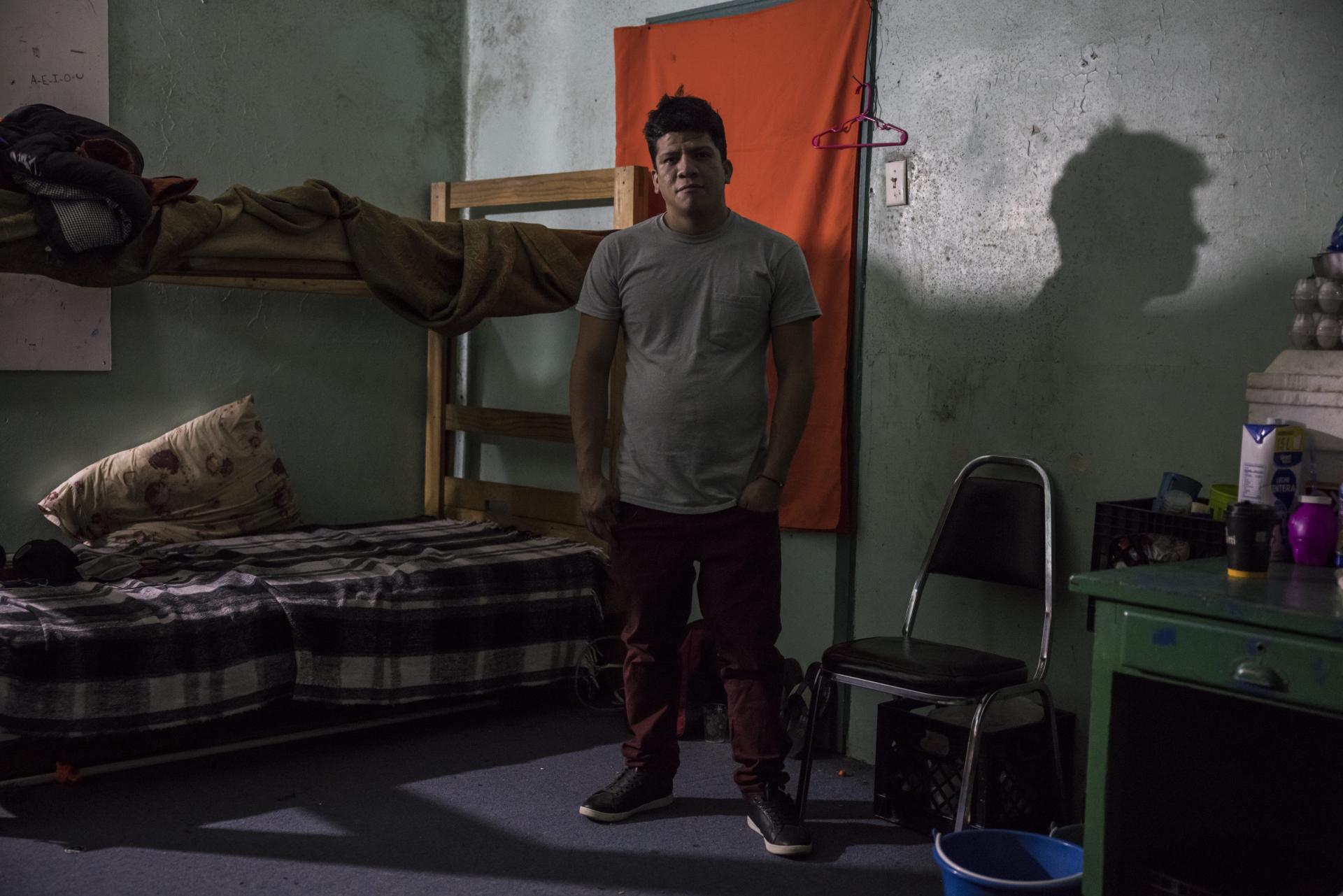
Above: Leonardo, a migrant from Venezuela, at the Baptist church shelter. Leonardo, who helps manage the shelter, earned only ten dollars a month in Venezuela, where his wife and six-year-old daughter are still living. He hopes they can join him once he’s settled in the United States.
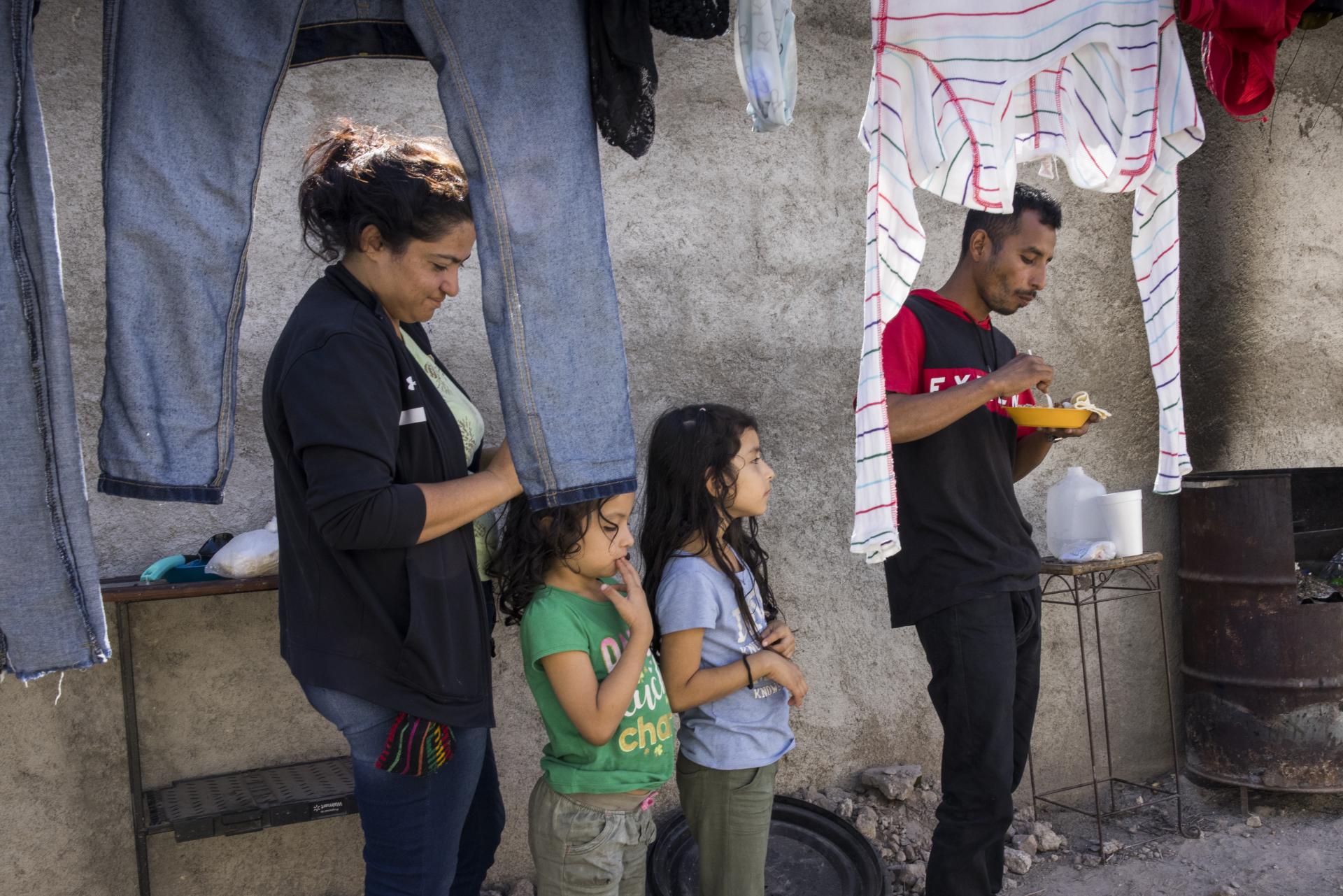
Above: Nimrod with his wife and two daughters. Nimrod, who suffers from panic attacks, has been unable to sleep since arriving in Piedras Negras. He says the journey from Honduras was very hard. An NGO that serves Nimrod’s shelter has given him medication for his physical and psychological pain.
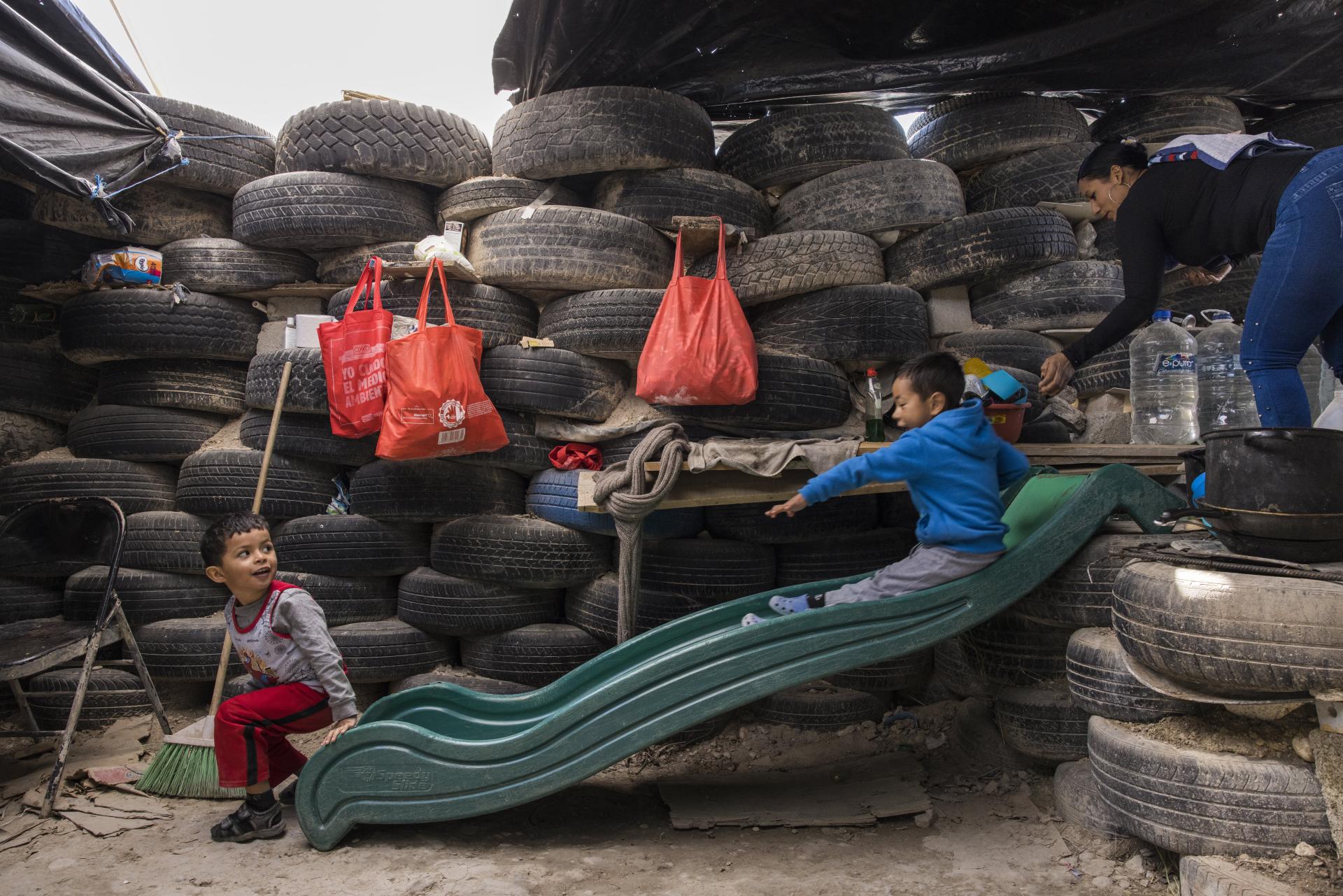
Above: Children play on a slide inside the tire-built shelter at the El Rancho migrant camp where their two families live.
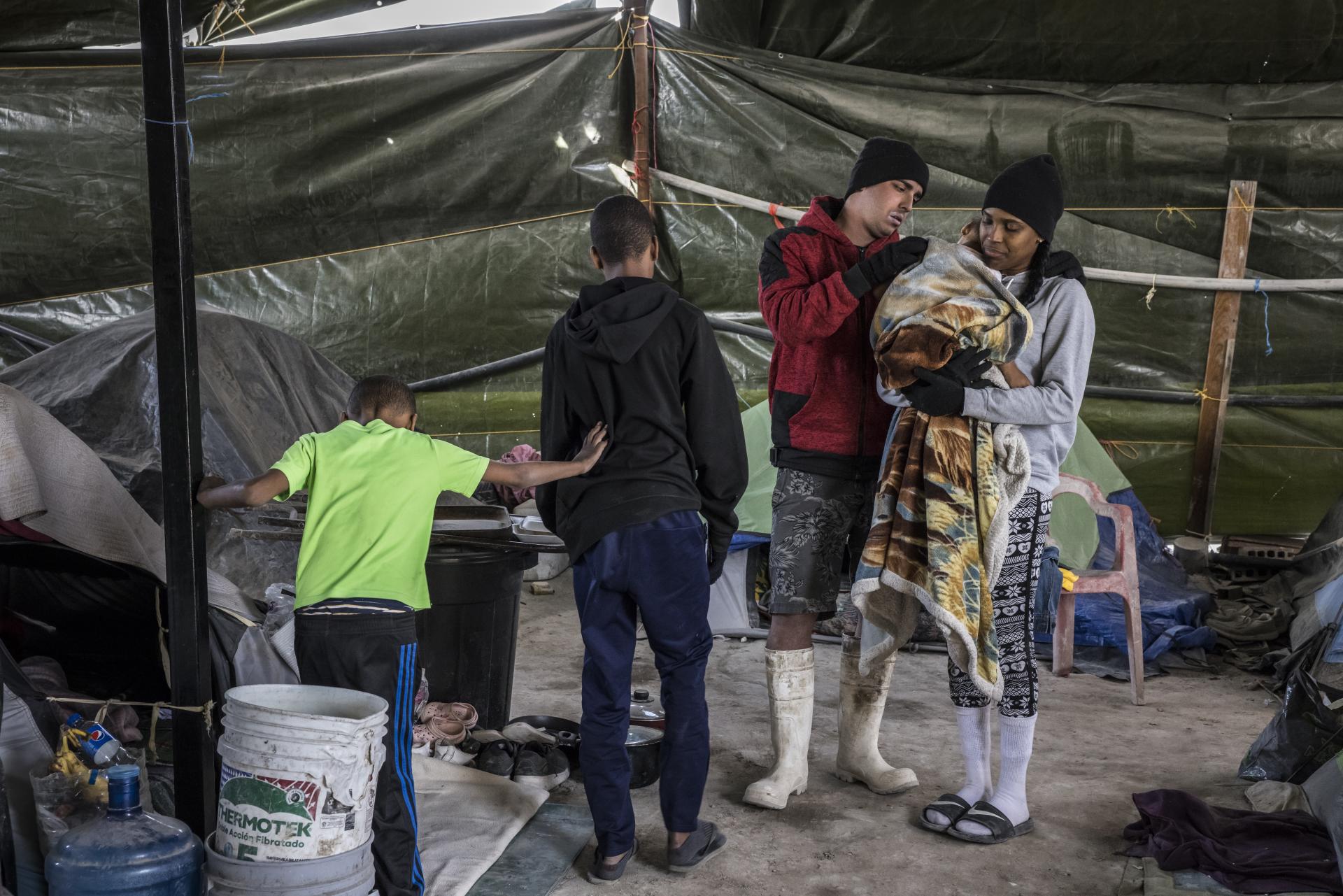
Above: Yanet with her husband and three children in the plastic structure that protects them from the wind and the cold. They sold everything they owned in Cuba to pay for a flight to Nicaragua and the long journey to the U.S.-Mexico border.
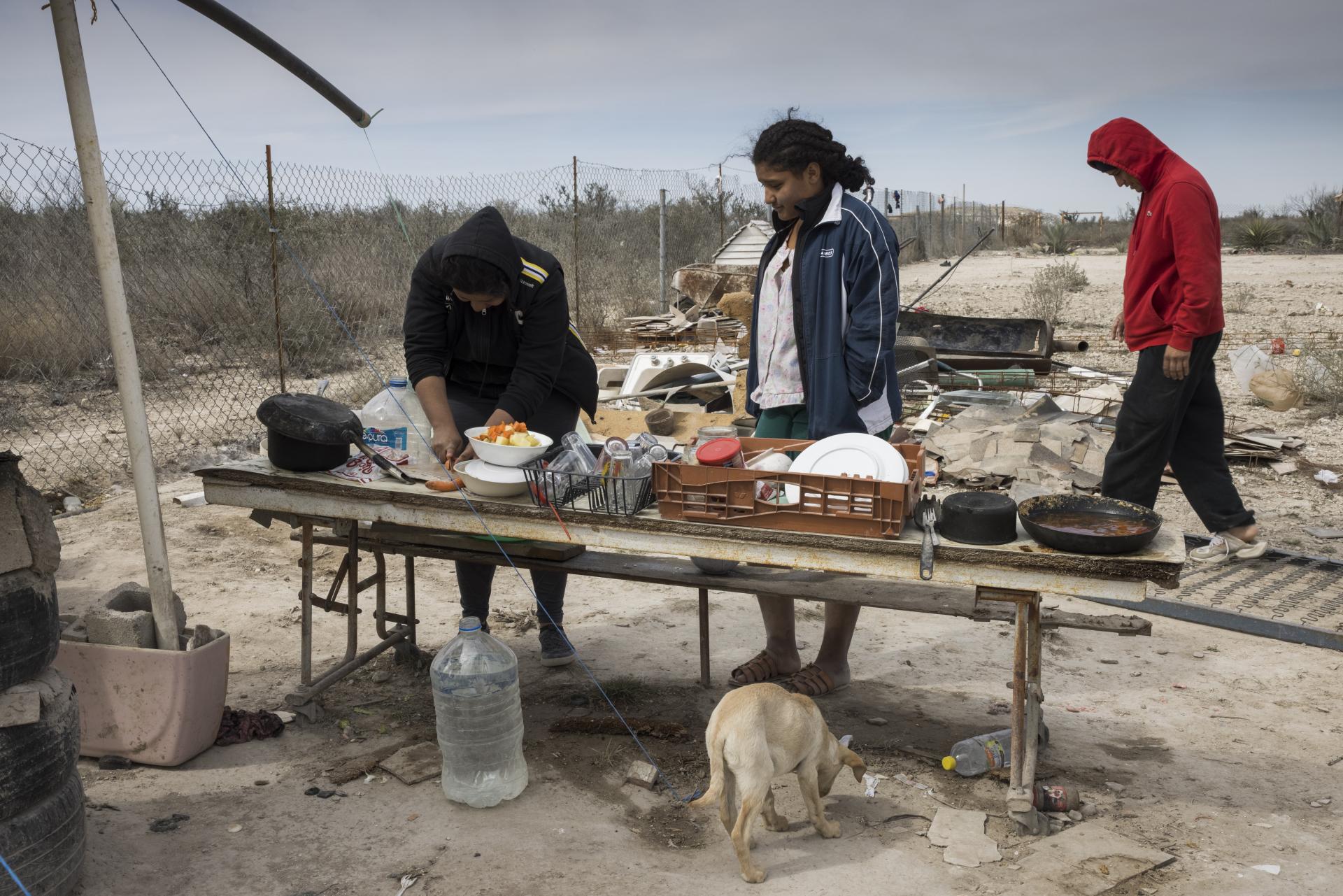
Above: A family of migrants prepares a meal at the El Rancho migrant camp on the outskirts of Piedras Negras.
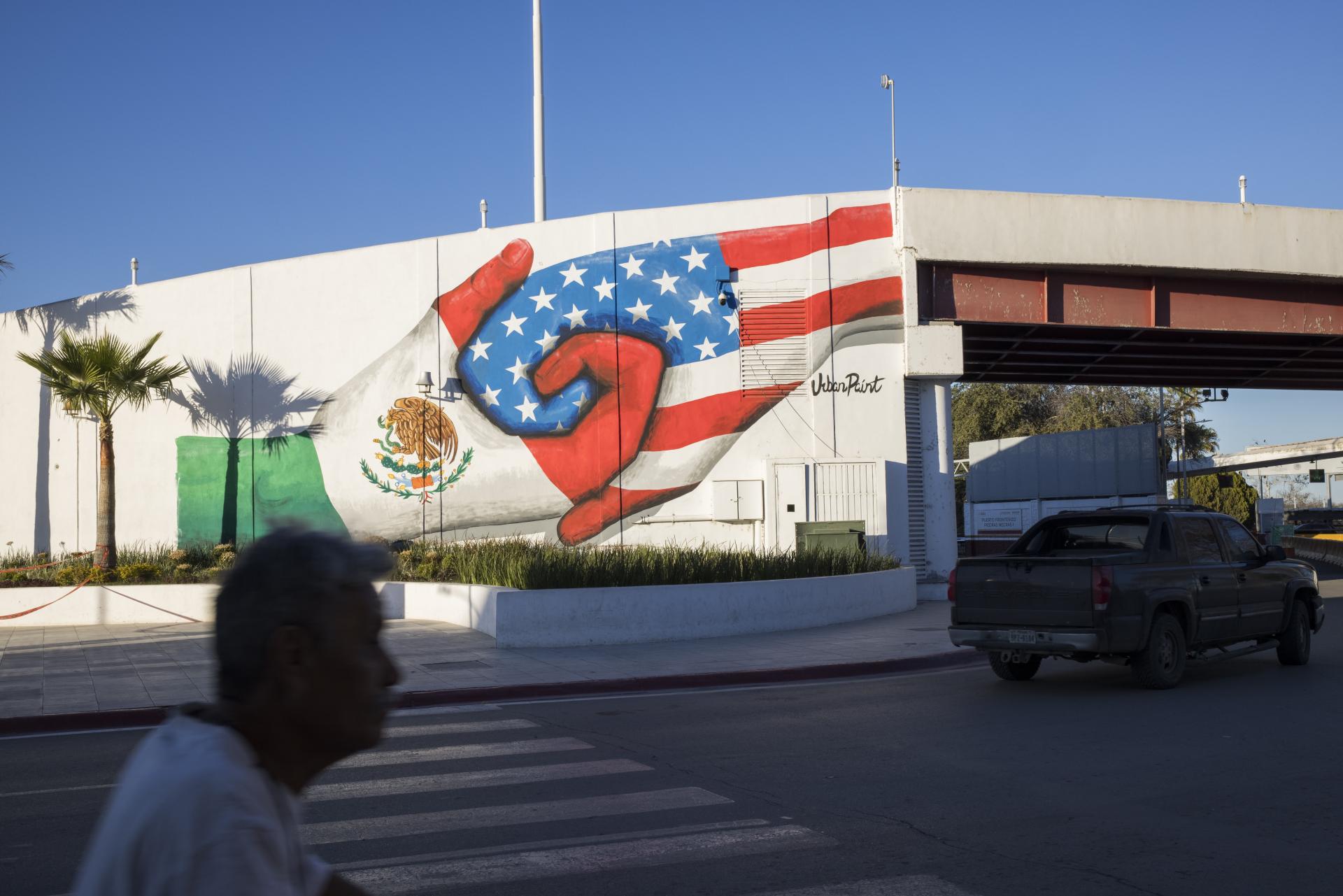
Above: The Piedras Negras International Bridge across the Rio Grande. On the other side of the bridge is the town of Eagle Pass, Texas. Migrants who have an appointment with U.S. immigration authorities have sometimes been prevented from crossing the bridge by criminal gangs.
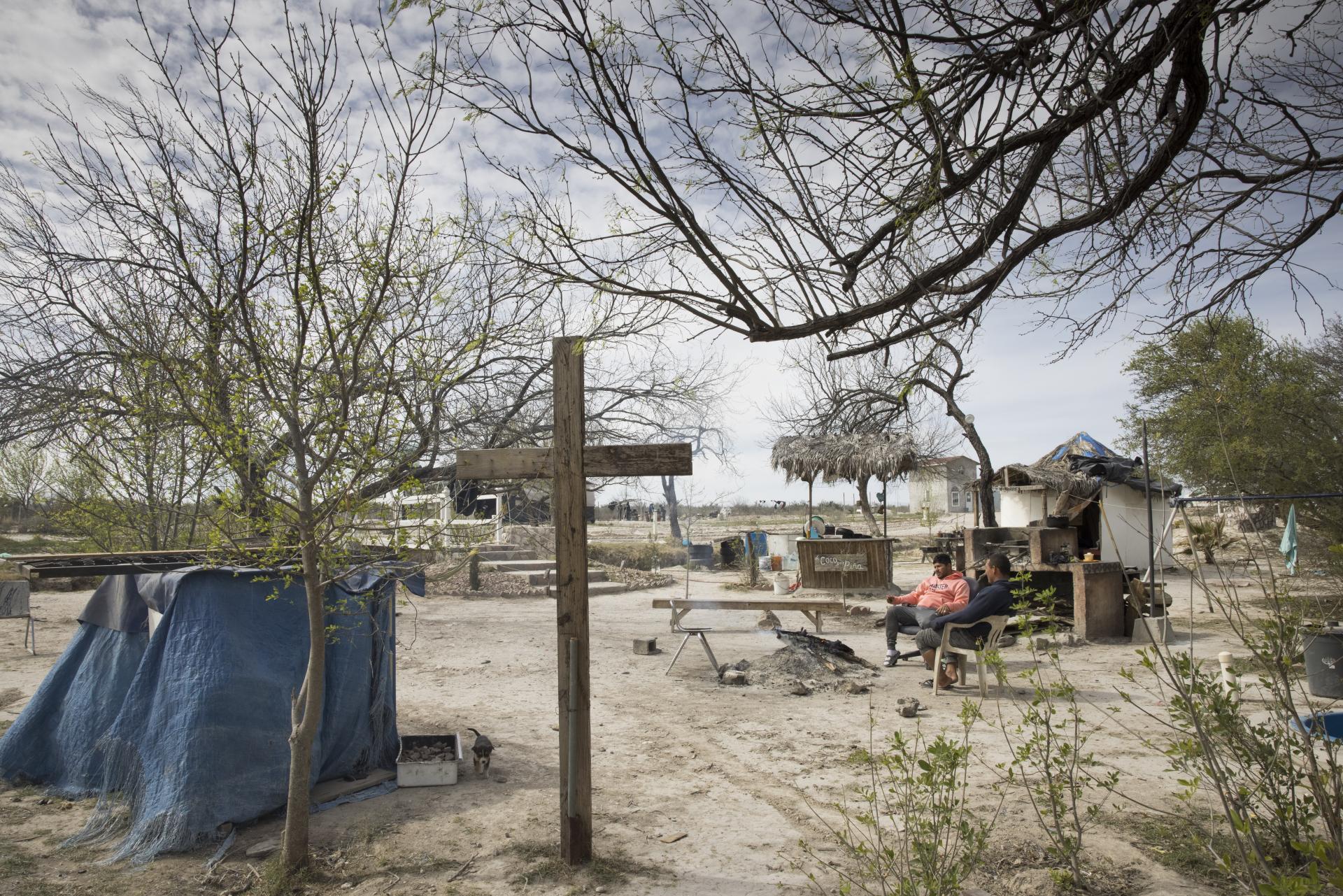
Above: Damian and Kiber from Honduras warm themselves by a fire in the El Rancho migrant camp.
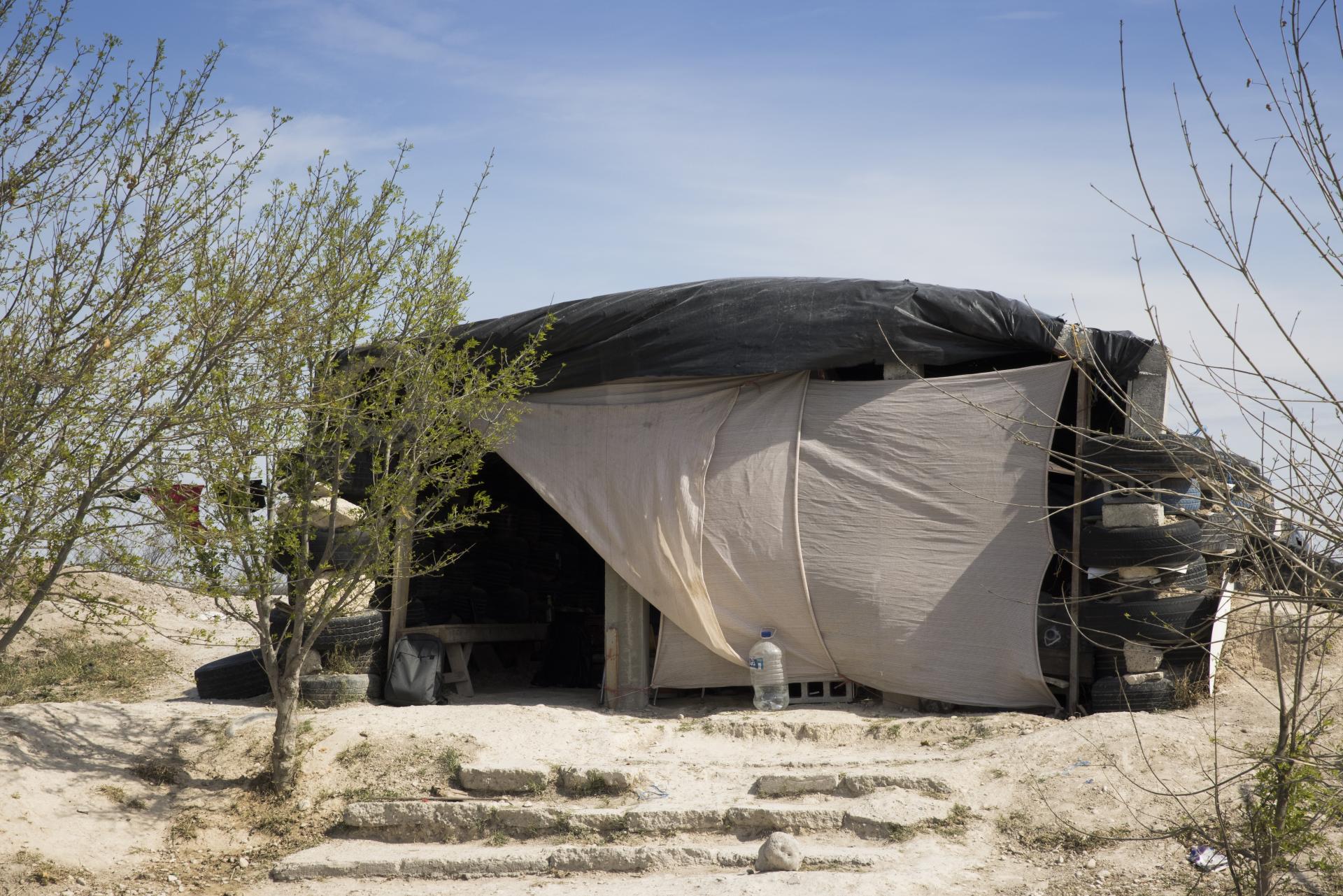
Above: A shelter built of old tires and plastic at the El Rancho migrant camp.
Please email comments to [email protected] and join the conversation on our Facebook page.
Previous Story
The Civil Theology of Robert Bellah
Next Story
Preventable Deaths
